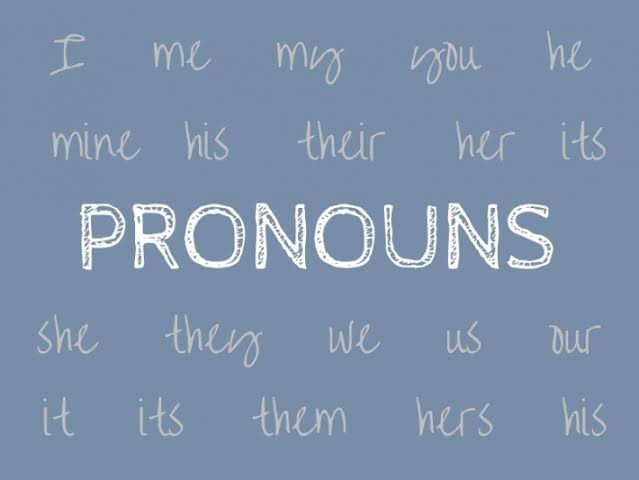There are about 8 parts of speech in English Language. For the purpose of this article, we'll be focusing on just one out of eight which is the Pronouns.
PRONOUNS
These are words which are used in place of nouns or noun phrases. Pronouns are used chiefly for the purpose of curtailing unnecessary repetition of nouns which makes a passage or write-up boring and/or clumsy.
Let's consider the scenario below;
Tomlee is a teacher, writer, steemian and blogger. Tomlee writes and publishes on the Steemit platform and other platforms. Tomlee also teaches in a school near Tomlee's house. Tomlee is loved by Tomlee's mother because Tomlee is obedient to Tomlee's mother. Tomlee and Tomlee's mother are so fond of themselves which makes Tomlee miss Tomlee's mother when Tomlee's mother is out for work.
The above passage portrays a repetitive case of the noun "Tomlee". This repetitive passage however can be re-written in a more interesting and acceptable way by employing the use of some pronouns to replace the noun in the passage:
Tomlee is a teacher, writer, steemian and blogger. He writes and publishes on the Steemit platform and other platforms. He also teaches in a school near his house. He is loved by hiss mother because he is obedient to his mother. Tomlee and his mother are so fond of themselves which makes him miss his mother whenever she is out for work.
With this short passage, it is glaring that the knowledge and mastery of pronouns are very important in writing an interesting passage or sentence.
Types of Pronouns
Pronouns are classified into 9 various types and they include the following:
- Personal Pronouns
- Indefinite Pronouns
- Possessive Pronouns
- Reciprocal Pronouns
- Relative Pronouns
- Demonstrative Pronouns
- Emphasizing Pronouns
- Reflexive Pronouns
- Interrogative Pronouns
Personal Pronouns
Personal pronouns are words used in place of any of the three persons present in English Language. We have the 'first-person', 'second-person' and 'third-person' pronouns. The first-person pronoun refers to the speaker, the second-person pronoun has to do with the person or persons being addressed while the third-person pronoun refers to the person or persons and/or things spoken about.
Still to note is that personal pronouns have singular and plural forms and they can be used both in the subjective or nomative as well as objective or accusative cases.
The table below illustrates personal pronouns;
| Persons | Subject | Object |
|---|---|---|
| Ist Person | I (We) | Me (Us) |
| 2nd Person | You (You) | You (You) |
| 3rd Person | He/She/It (They) | Him/Her/It (Them) |
Those in brackets are the plural forms of the Pronouns.
Indefinite Pronouns
As the name implies, these are pronouns used for nouns that are not specific, definite or clearly defined. There are various examples of indefinite pronouns and they are:
Some, any, few, every, each, either, anyone, something, none,such, many etc.
Possessive Pronouns
These types of pronouns are used to show ownership. Examples are: mine, ours, his, yours, their etc. It is imperative for students to know the disparity between possessive adjectives and possessive pronouns so as not to be confused in usage.
Demonstrative Pronouns
Demonstrative pronouns are so called because they point out particular persons, places or things. The English demonstrative pronouns include: those, this, that and these. This is singular while these is plural but both are used for near objects. That and those are used for remote and distant objects.
Relative Pronouns
Relative pronouns are pronouns used for introducing a clause and linking it with the words which precedes it, and to which it refers. More so, a relative pronoun does not only take the place of a noun or pronoun but it joins two parts of a sentence.
Examples are: who, that, whom, whose, which.
Interrogative Pronouns
There are employed in asking questions. Examples are; what, whom, where, which, who, whose.
Reflexive Pronouns
They refer to those pronouns which shows that the performer of an action directs the action to himself or herself. It is usually identified by the 'self' it takes.
Functions of Nouns
Since pronouns are often used in place of nouns, their functions are same. Thus, pronouns can serve as:
the subject of the sentence
Example: He killed the goatthe complement of a preposition
Example: He wants to come with usthe complement of an object
the object of the verb
the complement of a subject.
Education is really important for the growth and development of the child. Glad to share this piece with the community. If you enjoyed the post, kindly drop your comments.
